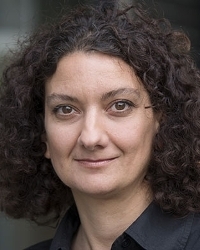
Research Grant for tuning into photosynthesis
Biophysicist Anjali Pandit has been awarded a FOM 'Projectruimte' research grant for her proposal ‘Tuning into the photosynthetic membrane with atomistic precision’.
Nuclear magnetic resonance

Pandit will be setting up experiments with nuclear magnetic resonance (NMR) in order to study the photosynthetic membrane of green algae. With NMR spectroscopy she can detect the structure and dynamics of molecules at atomic level, but distinguishing NMR signals in large, heterogeneous systems poses a serious challenge. That is why special molecular biological and isotope labelling tricks will be used, as well as NMR filter techniques.
Molecular mechanisms
Pandit’s research focuses on the molecular mechanisms of photoprotection. If too much light falls on an alga or leaf, it triggers a photoresponse in which part of the received light is not used but is dissipated instead. This works through subtle changes in the photosynthetic antenna proteins, linked to a larger reorganisation of protein supercomplexes in the membrane.
Bioengineering
Photoprotection is essential to protect the photosynthetic apparatus, but it does waste some sun energy. In the future, bioengineering could produce plants and algae that are both light resistant and yield a large amount of biomass, which is advantageous for the growing of crops and produces a higher energy content in biofuels. Before the photo-protection system can be tinkered with, it is important to understand how antenna proteins switch from light harvesting to energy dissipation and which membrane components effect the change.
New method
In the project, solid-state NMR will be used as a new method to understand the flexible interplay between photopigments, proteins and lipids in photosynthetic membranes at molecular level. By linking a light source into the NMR magnet, a photoresponse will be simulated in order to track direct light-stress sensitive changes.
From the FOM grant (€ 400,000) a PhD candidate will be appointed and a device will be purchased that measures fluorescence, so the NMR characterisations can be compared with the photophysical attributes of the membrane.
